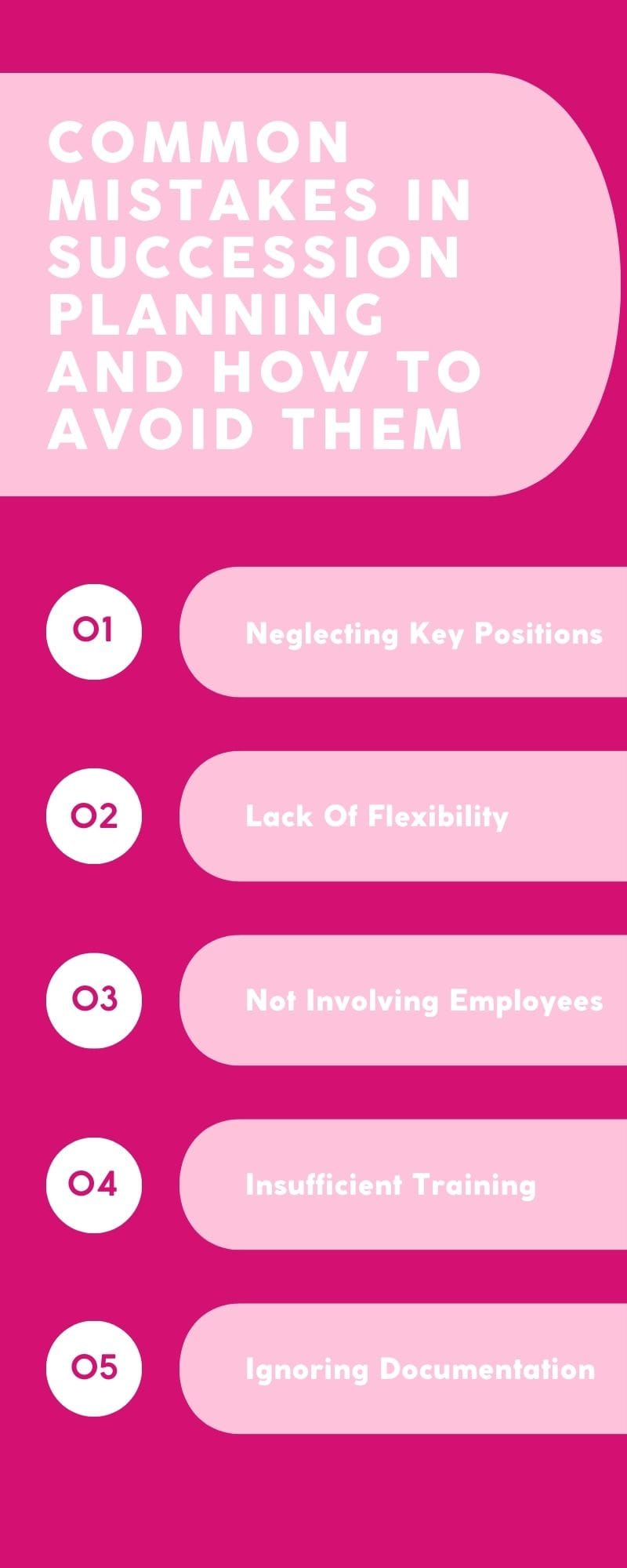Introduction to Succession Planning
Succession planning, in its essence, is the practice of identifying and developing a talent pool within your organisation to ensure a seamless transition when key positions become vacant. It's the roadmap to preserving and even enhancing organisational capability and ensuring that your business thrives in the long run.
In today's ever-changing business landscape, companies must adapt rapidly to remain competitive. Succession planning helps you stay one step ahead by preparing for key personnel changes proactively. Whether it's a CEO's retirement or a department head's sudden departure, having a well-crafted succession plan in place ensures that these transitions don't disrupt your organisation's operations or culture.
The Importance of Succession Planning in the Workplace
Mitigating Risk
Imagine a scenario where a key executive, perhaps the CEO, suddenly decides to retire or leave the organisation. Without a succession plan in place, this can throw your organisation into chaos. Succession planning helps mitigate this risk by ensuring there's a well-prepared successor waiting in the wings.
Succession planning doesn't just mitigate the risk of sudden departures but also provides a sense of security for key personnel. When employees know there's a plan for their replacement, it can ease concerns about the future and encourage them to remain committed to your organisation.
Continuity
Succession planning keeps the wheels turning. It ensures a seamless transition and minimises disruption when key employees exit the organisation. Business continuity is, therefore, no longer a concern, as it becomes a well-prepared strategy.
This continuity is not just limited to maintaining operations but extends to sustaining your organisation's culture and values. A well-planned succession ensures that the leadership and decision-making styles that have made your company successful are preserved.
Leadership Development
Succession planning nurtures leadership talent from within. By identifying and grooming internal candidates for future roles, you cultivate leadership skills that align with your organisation's values and objectives.
Furthermore, it fosters a sense of loyalty among your employees. When they see opportunities for growth and development within your organisation, they are more likely to stay, reducing turnover and the associated costs of hiring and training new employees.
Talent Retention
Employees appreciate opportunities for career growth and development. A well-defined succession plan can boost morale and retention rates, as staff see a future within the organisation.
This sense of growth potential not only improves employee morale but also acts as a powerful recruitment tool. Prospective hires are more attracted to organisations that offer clear paths for advancement.
Understanding the Succession Planning Process
Succession planning involves several steps that can be categorised as follows:
Identifying Key Positions
Your first task is to identify the key roles within your organisation. These are the positions that, if left vacant, would have a significant impact on your business. When identifying key positions, consider not only the current needs of your organisation but also its future direction. This proactive approach ensures that your succession plan remains relevant as your company evolves.
Identifying Needs
After determining your critical roles, you need to assess the skills and qualifications required for each one. This step helps in recognising any skill gaps within your existing workforce.
This gap analysis provides a clear roadmap for employee development. It can guide your training and development programs, ensuring that your employees are equipped with the necessary skills for future roles.
Developing Job Profiles
Each position should have a well-documented job profile. This document outlines the role's responsibilities, qualifications, and any other essential information for potential successors.
These job profiles act as the foundation of your succession planning efforts. They serve as a reference point for selecting and developing candidates, ensuring that you're looking for individuals with the right skills and attributes.
Initiating the Recruiting Process
Once you've identified your potential successors, it's time to initiate the recruitment process. This may involve internal promotions, external hires, or a combination of both. During the recruitment process, consider not only the skills and qualifications but also the cultural fit of potential successors. An employee who embodies your organisation's values is more likely to adapt seamlessly to their new role.
Appointing a Successor
Once the right candidate has been selected, they should be appointed to the position. This may involve training and onboarding to ensure they are fully prepared. The appointment stage is not the end of the journey but rather the beginning of a new one. Ongoing support, mentoring, and feedback are crucial to help the successor settle into their new role smoothly.
Managing the Job Handover
A smooth transition is critical. This stage involves a well-planned handover process, where the outgoing employee shares knowledge and expertise with the successor. This knowledge transfer is not just about technical skills but also about understanding the nuances of the role. Effective mentoring can bridge the gap between theory and practical experience.
Documenting the Transition
It's crucial to document the entire transition process, including the steps taken, challenges faced, and solutions implemented. This information can be invaluable for future succession planning efforts. This documentation goes beyond a mere record-keeping exercise. It serves as a source of knowledge, allowing your organisation to learn from past transitions and continuously improve its succession planning process.
Common Mistakes in Succession Planning and How to Avoid Them

Neglecting Key Positions
Focusing solely on the top leadership roles and neglecting other crucial positions can be a mistake. Every role within your organisation deserves consideration. Neglecting key positions can lead to a vulnerable middle management layer. By recognising the significance of these roles, you fortify your organisation from the ground up.
Lack of Flexibility
Being too rigid in your succession planning approach can lead to missed opportunities. Embrace adaptability and consider a variety of candidates. Flexibility allows your organisation to adjust to changing circumstances, such as emerging skills and technologies. A rigid approach can lead to a succession plan that quickly becomes outdated.
Not Involving Employees
Succession planning is not just an HR task; it's a collective effort. Engage employees in the process, get their input, and consider their career aspirations. Employees are your most valuable resource when it comes to succession planning. They can provide insights, feedback, and motivation that can significantly enhance the success of the program.
Insufficient Training
Appointing a successor isn't enough. Ensure they receive proper training and support to transition into their new role smoothly. Investing in training demonstrates your commitment to the success of your successors. It helps them build the necessary skills and ensures that they are fully prepared for their new responsibilities.
Ignoring Documentation
Documenting the transition process is often overlooked but is invaluable for learning from past experiences and improving your succession planning approach. Documentation is the key to learning and continuous improvement. Without it, you may repeat the same mistakes or miss opportunities to enhance your succession planning process.
Metrics for Evaluating Succession Planning Success

- Time to Fill Vacancies: Measure the time it takes to fill key positions after they become vacant. Shorter times indicate a more successful succession planning process. Reducing the time it takes to fill vacancies ensures that your organisation continues to operate efficiently and effectively. It also minimises disruptions and related costs.
- Employee Satisfaction: Conduct surveys or interviews to gauge employee satisfaction with the succession planning process. Satisfied employees are more likely to stay and thrive within your organisation. High employee satisfaction is a strong indicator that your succession planning program is functioning well. It reflects the positive impact of the program on your workforce.
- Retention Rates: Monitor retention rates for employees who have been promoted internally through succession planning. Higher retention indicates the program's effectiveness. Retention rates can be a cost-effective way to assess the success of your succession planning. Reduced turnover translates to lower recruitment and training costs.
- Performance Metrics: Track the performance of employees who have undergone succession planning. If they consistently perform well in their new roles, it's a sign of success. Performance metrics are essential for ensuring that your successors not only adapt to their new roles but also excel in them. High performance reflects the effectiveness of your succession planning.
- Diversity and Inclusion Metrics: Assess whether succession planning has positively impacted diversity and inclusion within your organisation. A diverse pool of candidates is a sign of a successful program. Diversity and inclusion metrics ensure that your succession planning contributes to a more equitable and representative workforce. They reflect your commitment to these important principles.
Conclusion
In conclusion, mastering succession planning is not just a professional skill but a strategic necessity for HR professionals and business leaders. The ability to seamlessly transition key roles, develop internal talent, and maintain business continuity is invaluable.
This guide has walked you through the importance of succession planning, the process involved, frequently asked questions, common pitfalls, and success metrics. With this knowledge, you can position your organisation for long-term success and growth.
So, start your journey toward mastering succession planning, and ensure your organisation is prepared for the future. Remember, the best time to start is now.

